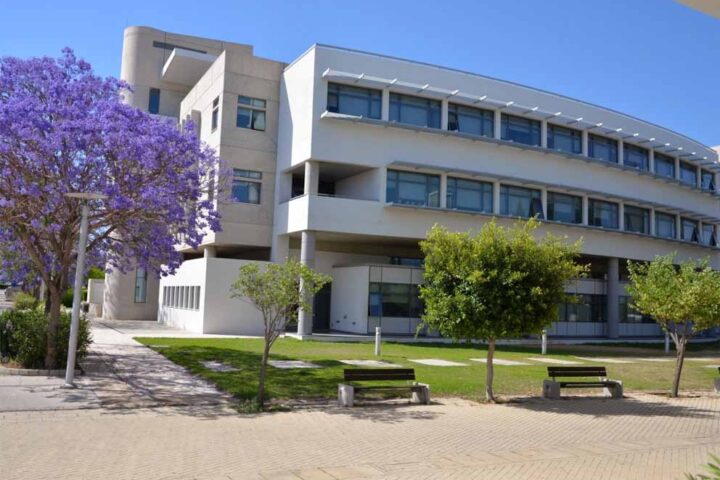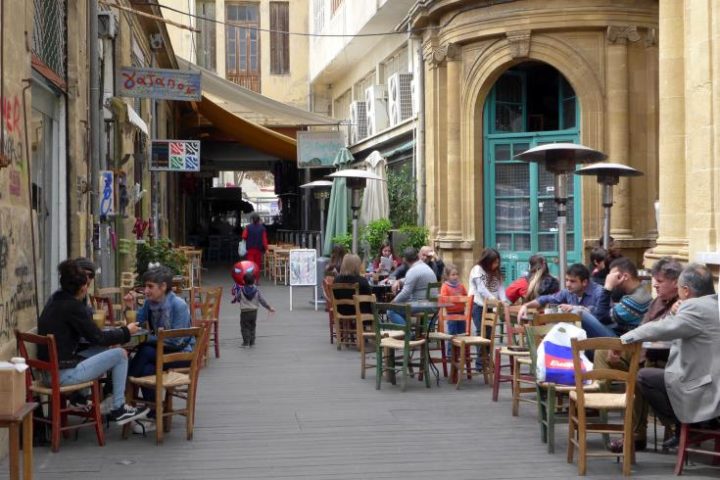* ELA pay-down to continue; Shares to re-list on Dec. 19 *
* Sweeping changes after AGM; New market cap at €2.14 bln *
.jpg) By noon on Thursday, the Bank of Cyprus will have a new chairman and board, determined to continue with the restructuring plan and aiming to reinstate the stock on the Cyprus and Greek bourses by the end of next month, all signs of stability and confidence returning to the island’s leading lender.
By noon on Thursday, the Bank of Cyprus will have a new chairman and board, determined to continue with the restructuring plan and aiming to reinstate the stock on the Cyprus and Greek bourses by the end of next month, all signs of stability and confidence returning to the island’s leading lender.
The AGM at 9am will probably elect the ten-man board proposed by billionaire fund manager Wilbur L. Ross Jr. (photo below), with former Deutsche Bank CEO Josef Ackermann taking the reins as new chairman.
.jpg) They will have their plate full as it will be difficult to return to profitability in an economy dominated by over-lending stubbornly high levels of non-performing loans, mostly housing mortgages.
They will have their plate full as it will be difficult to return to profitability in an economy dominated by over-lending stubbornly high levels of non-performing loans, mostly housing mortgages.
Next on the agenda will be the fate of the subsidiary bank in Russia, Uniastrum, which the new shareholders and board have to determine if it fits within the asset mix in order to develop it further (highly unlikely in the present state of the Russian economy) or maintain it and eventually get rid of it.
A similar fate awaits the insurance subsidiary CNP Asfalistiki, which even the French principals are not too keen on retaining because of the recessionary state of the Cyprus economy.
PAYING DOWN ELA
But one area where the new board and current CEO John Hourican are in total agreement is the continued paying down of the European Liquidity Assistance funds, last estimated by Moody’s at EUR 8.9 bln or 29% of the bank’s assets of EUR 28.6 bln, having dropped from 37% in March this year.
“Reducing ELA reliance is credit positive for the bank and a sign that it is healthy,” said a banking analyst on condition of anonymity, adding that the recent capital increase was also seen as credit positive by the rating agencies, while the presence of the new shareholders and nominee board members strengthens confidence in the bank.
“The biggest concern will have to be to reduce the exposure to NPLs, presently half the loan book. This, combined with the further relaxation of capital controls, the stabilisation of the level of NPLs and their gradual reduction through effective means of recovery and restructuring, will put the bank on a healthy path once again.”
Bank of Cyprus was one of four systemic banks that passed the Europe-wide capital stress tests last month, having raised EUR 1 bln three months ago and subsequently paid down part of the bailout debt imposed on now defunct Laiki Popular Bank, which it was forced to absorb last year.
Outgoing chairman Christis Hasapis said in his parting comments that will probably be repeated during the AGM, that he and his board were handing over a strong-capital bank.
Last year, the bank held successive and fiery meetings after the bailout programme for Cyprus included a bail-in of some EUR 4 bln by depositors-turned-shareholders, with the former owners of the bank diminished to less than 1% of today’s capital.
This resulted in several board shuffles and three CEOs in several months, with the incumbent John Hourican remaining in office for just over a year now and implementing a drastic restructuring that includes downsizing, the sale of non-core assets at home and overseas, as well as stringent plans to recover non-performing debts, especially from major clients who have funds but refuse to pay.
“RESUSCITATION TO GROWTH”
Ross, whose group of investors pumped a total EUR 400 mln in the bank’s capital raise, in addition to a EUR 120 mln injection from the European Bank for Reconstruction and Development (EBRD), hopes to achieve a major turnaround in the bank’s mid- to long-term future, telling the Financial Mirror in a recent interview that he intended to take it “from resuscitation to growth.”
“I do not strip assets or liquidate companies. I try to breathe life back into them,” Ross had said, basing the future prospects of the bank on the recently discovered offshore energy resources, the privatisation of some 1.4 bln euros worth of state-owned companies, overseas expansion and the introduction of modern technologies, such as mobile banking.
On last month’s results of the European Central Bank stress tests, Ross said that the Bank of Cyprus “is undergoing an impressive metamorphosis” and has reduced its dependency on Emergency Liquidity Assistance from the European rescue funds by repaying EUR 3.7 bln, has achieved a lot in deleveraging and the sale of non-core operations, and has returned to profitability.
The three-scenario stress tests showed that Bank of Cyprus would have an asset quality rate, a basic index and adverse index of 11.5%, 11.6% and 5.8% of common equity Tier 1 (CET1) capital, with a surplus of EUR 81 mln, if the present conditions remain until the end of 2016. Coincidentally, that is the same amount of profits announced for the first half of the year, with the 9-month results to be approved by the new board and announced next week, on November 27.
ACKERMANN NEW CHAIRMAN
 Thursday’s AGM will most likely approve the Ross-team that will be headed by Josef Ackermann (photo left) as non-executive chairman, Wilbur Ross and Vladimir Strzhalkovskiy as co-vice chairmen, and Arne Berggren (EBRD nominee), Maxim Goldman, Dr. Christodoulos Patsalides and Michalis Spanos as new board members, together with CEO Hourican and two senior bank executives, Marios Kalochoritis and Ioannis Zographakis who are up for re-election.
Thursday’s AGM will most likely approve the Ross-team that will be headed by Josef Ackermann (photo left) as non-executive chairman, Wilbur Ross and Vladimir Strzhalkovskiy as co-vice chairmen, and Arne Berggren (EBRD nominee), Maxim Goldman, Dr. Christodoulos Patsalides and Michalis Spanos as new board members, together with CEO Hourican and two senior bank executives, Marios Kalochoritis and Ioannis Zographakis who are up for re-election.
Zacharias Palexas will also be candidate for the board, nominated by the former Laiki Bank depositors (SYKALA), while Bank of Cyprus and ex-Laiki bondholders are expected to stage a protest in front of the bank’s headquarters from 8.30am.
According to a special resolution to be approved at the AGM, the number of board members shall be no less than seven and no more than 13, which means that Palexas may be elected to the new board.
The meeting will need to approve the consolidated financial statements for 2013, that had been pending due to the takeover of the now-defunct Laiki Bank and the loss of both banks’ Greek operations, as part of the bailout plan and writedown of toxic Greek government bonds.
The agenda also includes retaining EY (Ernst & Young) as auditors, maintaining last year’s remuneration level for board members (Chairman EUR 68,000, Vice-Chairman 51,000, non-executive members 13,000 and committee members 2,100-6,300) and a host of special resolutions, such as board numbers to be reduced from 10-to-18 to 7-to-13, five board members comprising a quorum, and other decisions to allow for a smoother functioning of the bank.
There is also a proposal to remove Anton Smetanin, Anjelica Anshakova, Dmitry Chichikashvili, Eriskhan Kurazov, Adonis Papaconstantinou and Marinos Gialelis from the board.
The proposed new members have already been vetted by the Central Bank of Cyprus as part of “The fitness and probity (Assessment Criteria) Directive” as well as the Guidelines of the European Banking Authority.
Meanwhile, the 8.9 bln shares are expected to be reinstated on the Cyprus Stock Exchange and the Athens Stock Exchange by the end of next month and probably on Friday, December 19, according to official sources.
“Whatever the case, the prospectus of new shares will probably be approved by the Cyprus Securities and Exchange Commission and the stock relisted on the CSE oin order to start trading again before the end of the year,” the source said.
The stock’s return will give a new impetus to the near-dormant CSE, with an initial listing price of 24c, the value at which shares were sold in private placement to institutional investors.
If the stock price holds, then the bank will close the year with a market capitalisation of EUR 2.14 bln.







